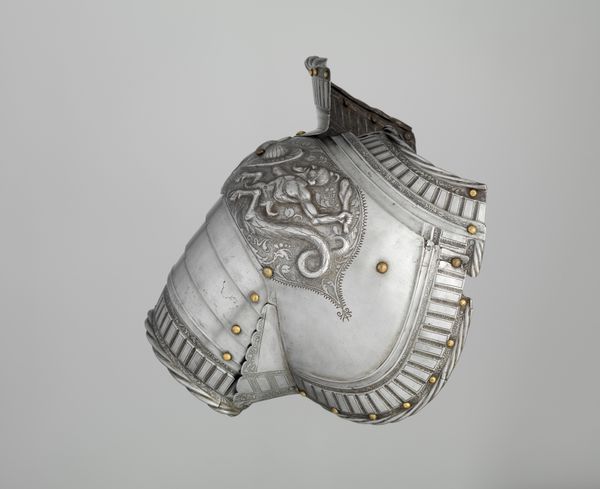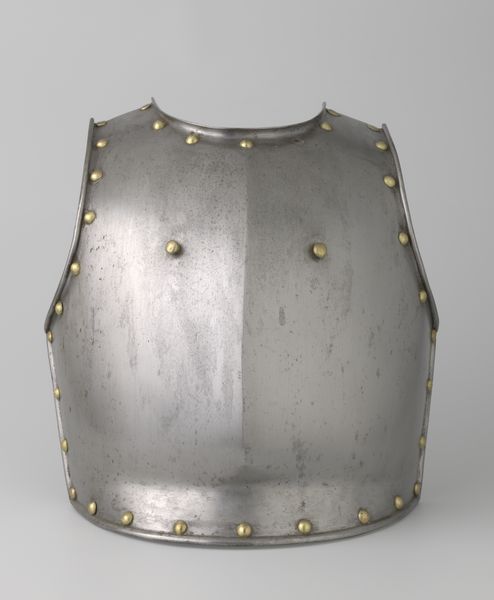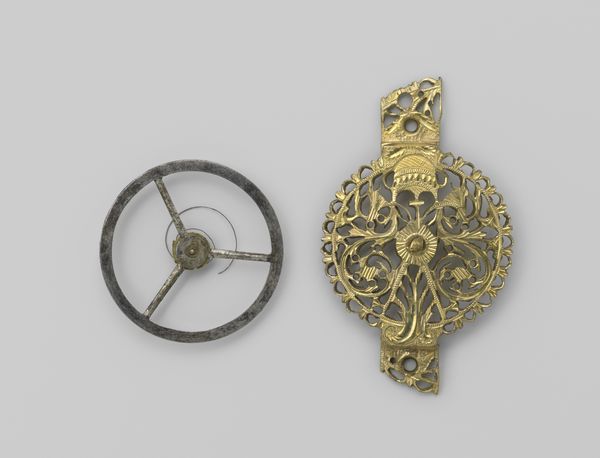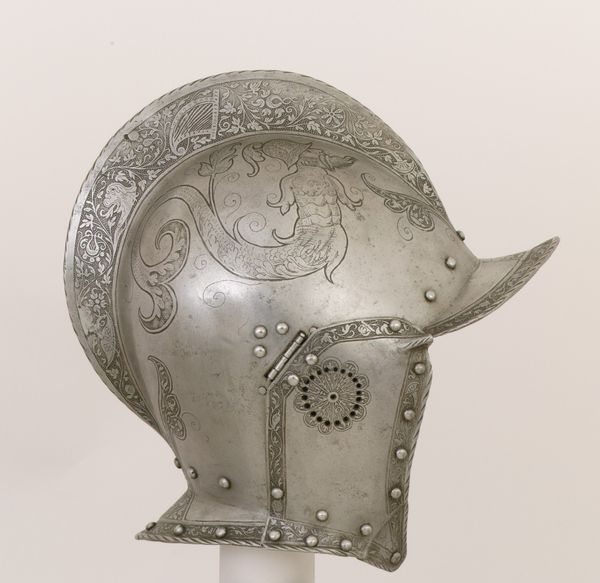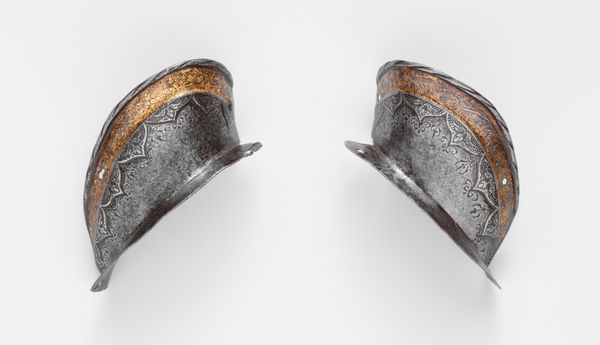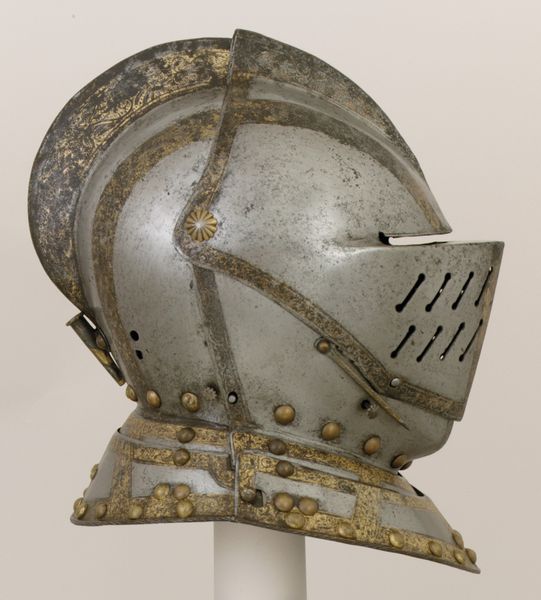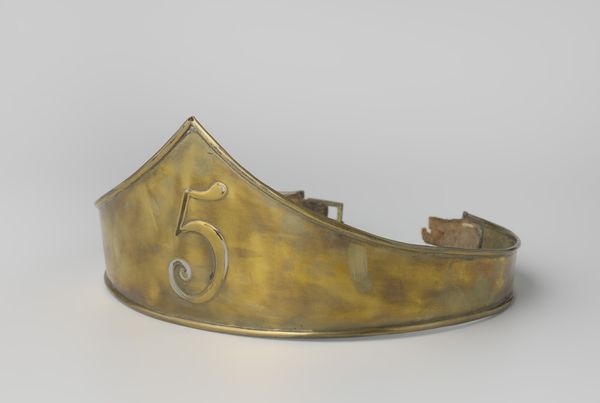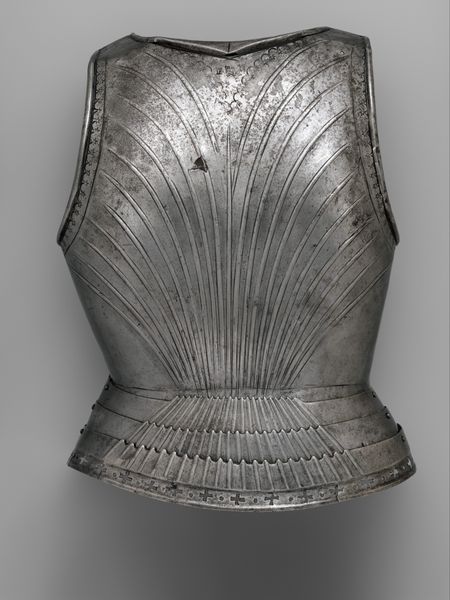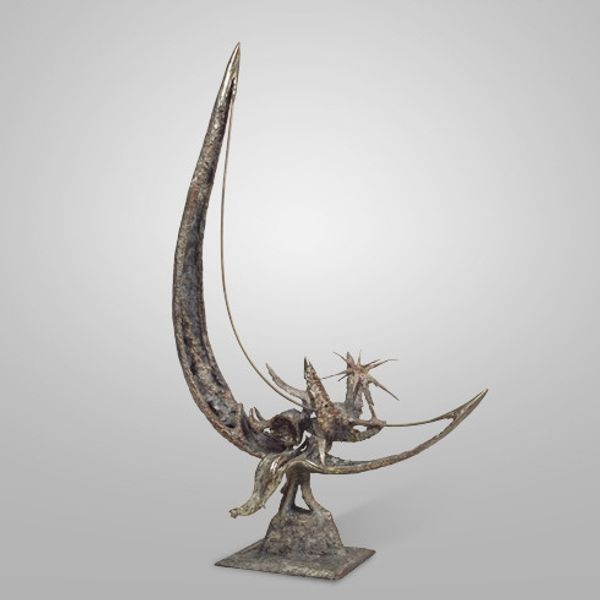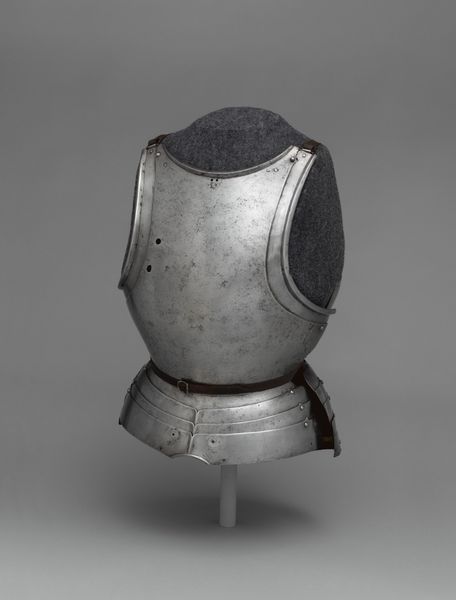
Infantry Garniture of a Target (Shield) and Pointed Morion 1570 - 1580
0:00
0:00
metal, sculpture
#
metal
#
sculpture
#
islamic-art
#
armor
#
decorative-art
Dimensions: Rondache diameter: 55.9 cm (22 in.) Shaffron weight: 2 lb. 10 oz. Cabasset weight: 6 lb.
Copyright: Public Domain
Curator: Immediately, I'm struck by how ornamental this armor is. It practically glows, despite being made of metal. It’s an intriguing blend of utility and ostentation. Editor: Well, let's delve into its story. What we are looking at is an Infantry Garniture of a Target and Pointed Morion, crafted between 1570 and 1580. Pompeo della Cesa is credited with its creation. Curator: So, late 16th century. That explains the intricate decoration! The craftsmanship suggests this was likely commissioned for someone of very high status, even though infantry equipment doesn't always signal status or individual identity. The very existence of “decorative art” in what is essentially battle gear raises questions about performance and power, doesn't it? How are masculinity and class being reinforced here? Editor: The visual language is fascinating. I see recurring motifs, a stylized bestiary in metallic relief. A series of creatures winds around the helmet and the shield in particular. Notice, for example, the symbolic importance of lions in Western European iconography. Do they signal bravery? Divine authority? There's also something evocative about the contrast between silver and gold. Curator: Yes, it prompts us to consider who could actually afford such extravagance, and more importantly, what power structures allowed them to accumulate such wealth during that period. Military might was intimately linked to economic disparity, both used to uphold the colonial project across Europe. Editor: Do you think the artist was consciously critiquing those dynamics? It feels like he might have been merely reflecting the accepted symbols of the era. Curator: Perhaps. But even seemingly neutral representation isn't really neutral. I am just interested to contextualize what such a weapon—transformed into this opulent thing—might have represented in an era defined by colonialism and burgeoning capitalism. The fact that it's classified under the rubric of Islamic art also raises more questions, I suppose, around cultural and even technological exchange across geographic space. Editor: Indeed, and reflecting on it, that circular form of the shield calls to mind cosmological diagrams and mandalas. The artist certainly knew how to imbue meaning through metal. Curator: Absolutely. It's a potent symbol—at once protective and declarative. Editor: So true. Seeing how symbols work offers an interesting perspective. Curator: And from my viewpoint, a powerful example of the politics of display.
Comments
No comments
Be the first to comment and join the conversation on the ultimate creative platform.
